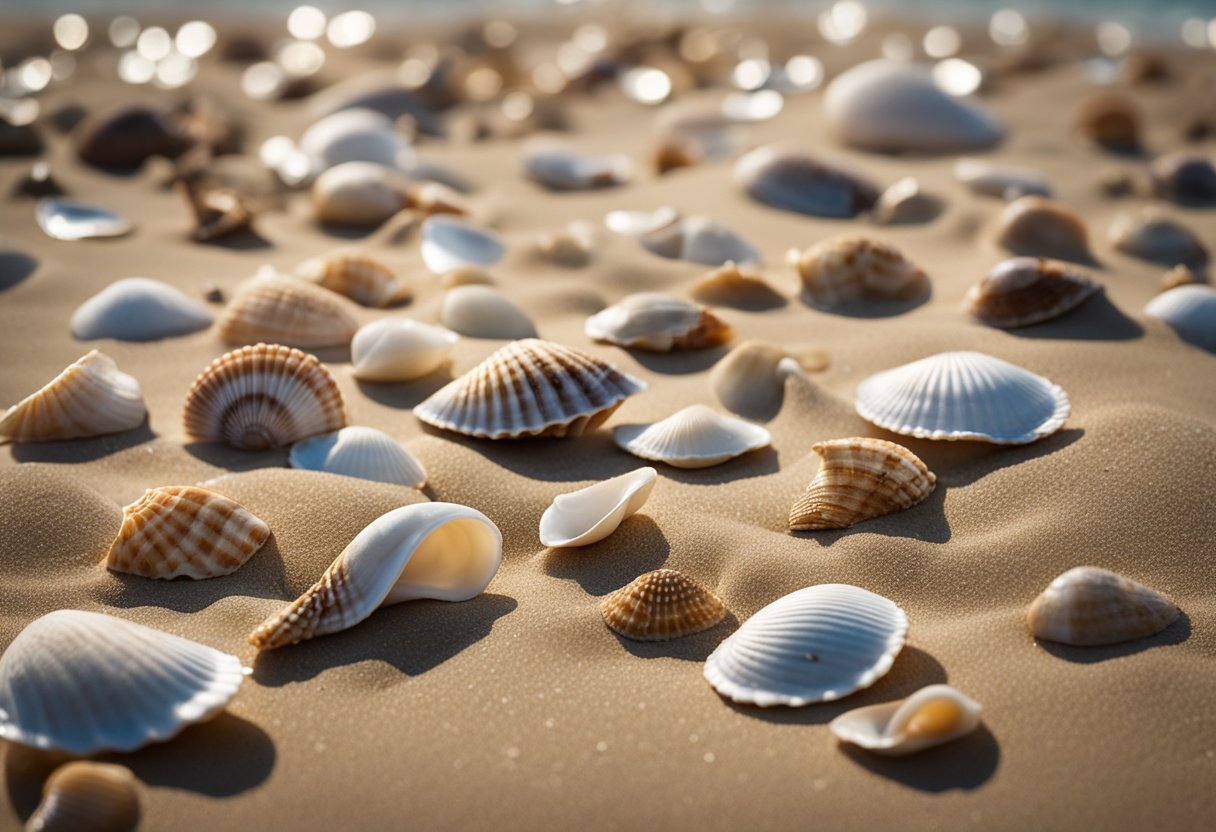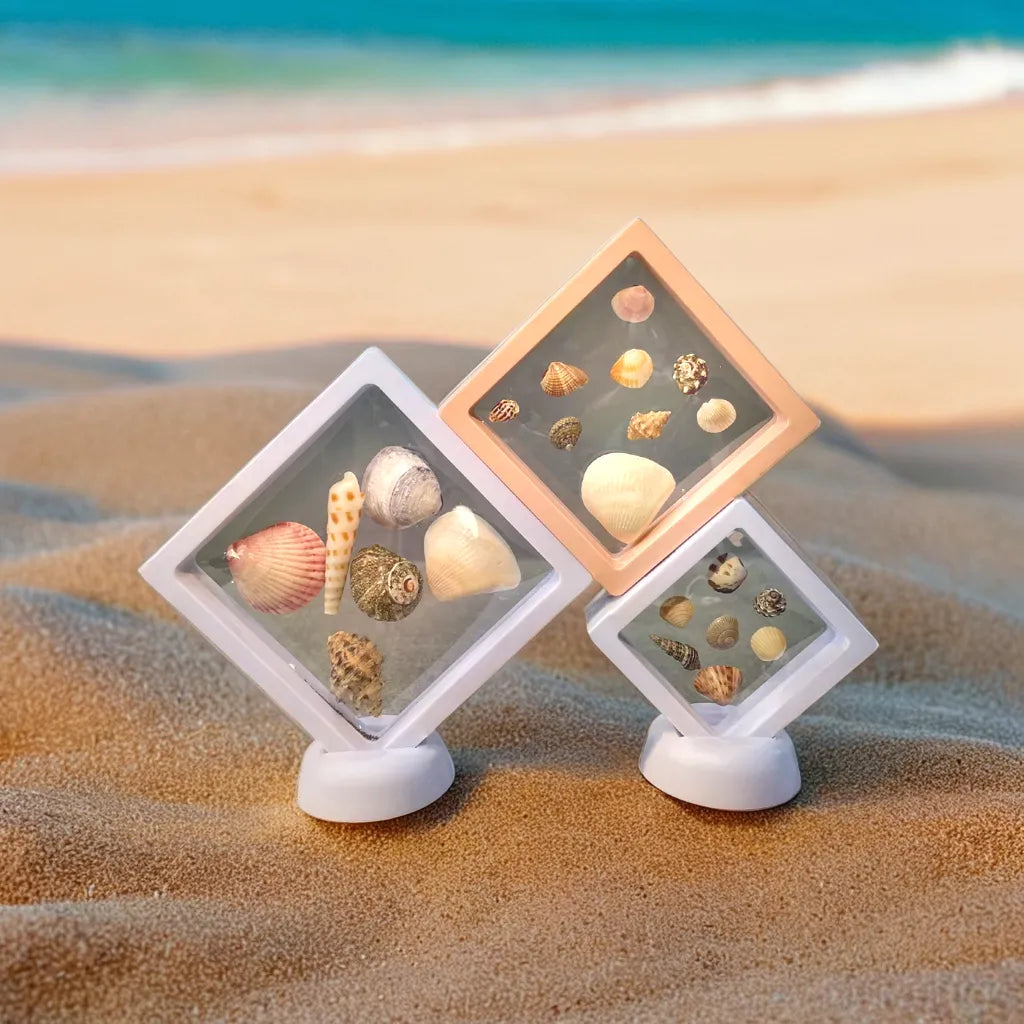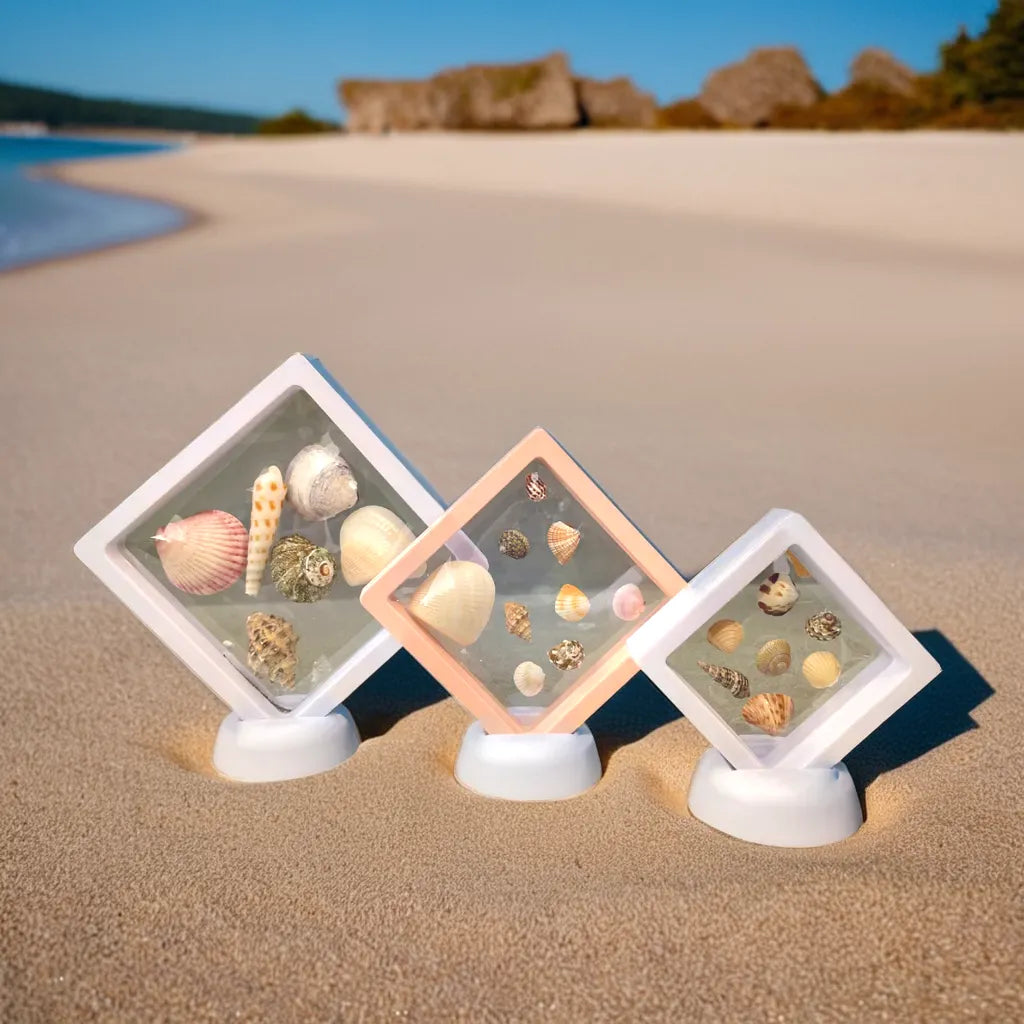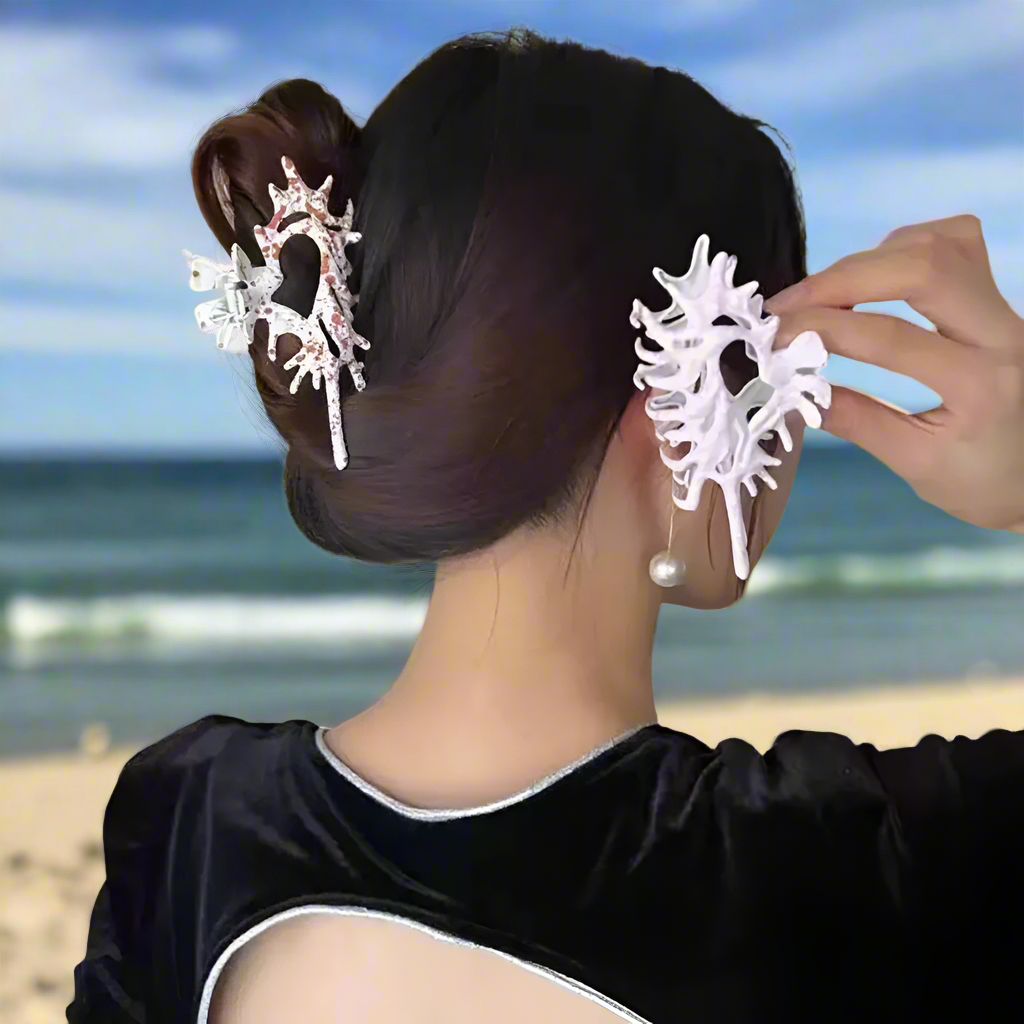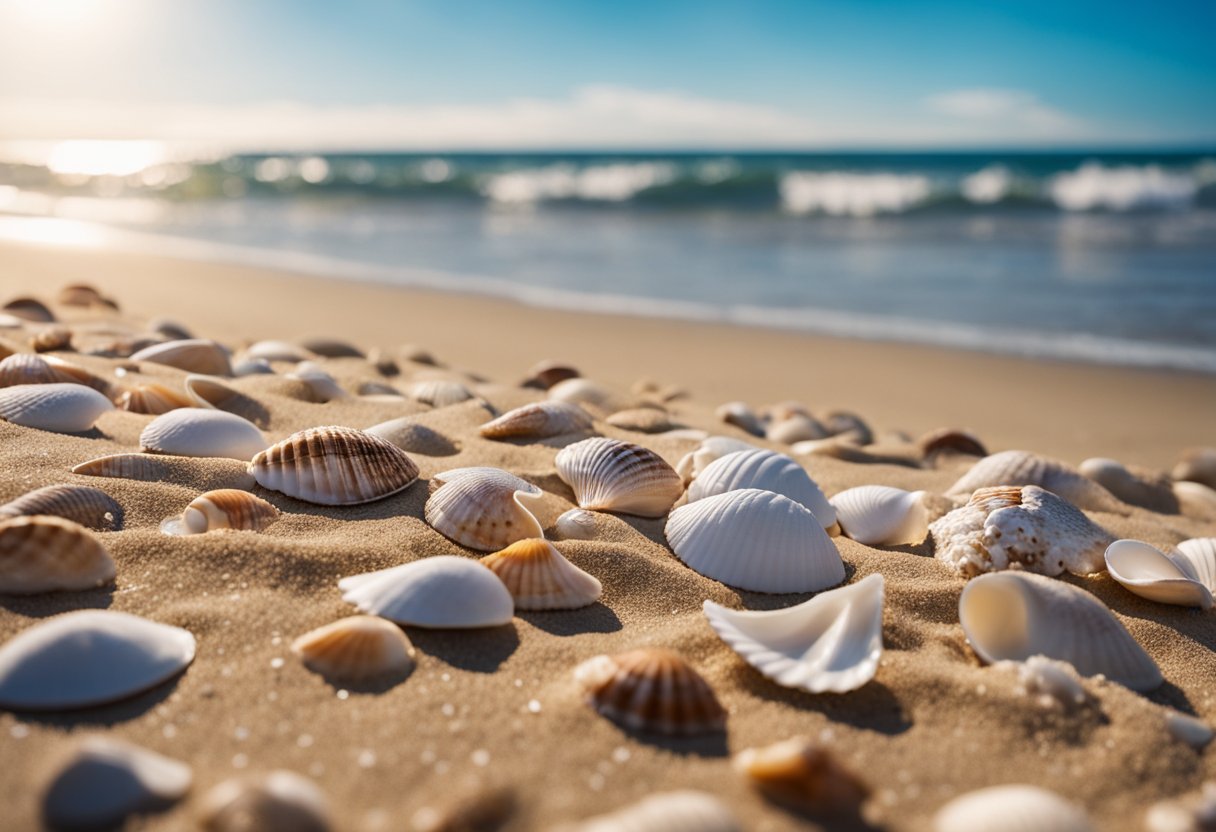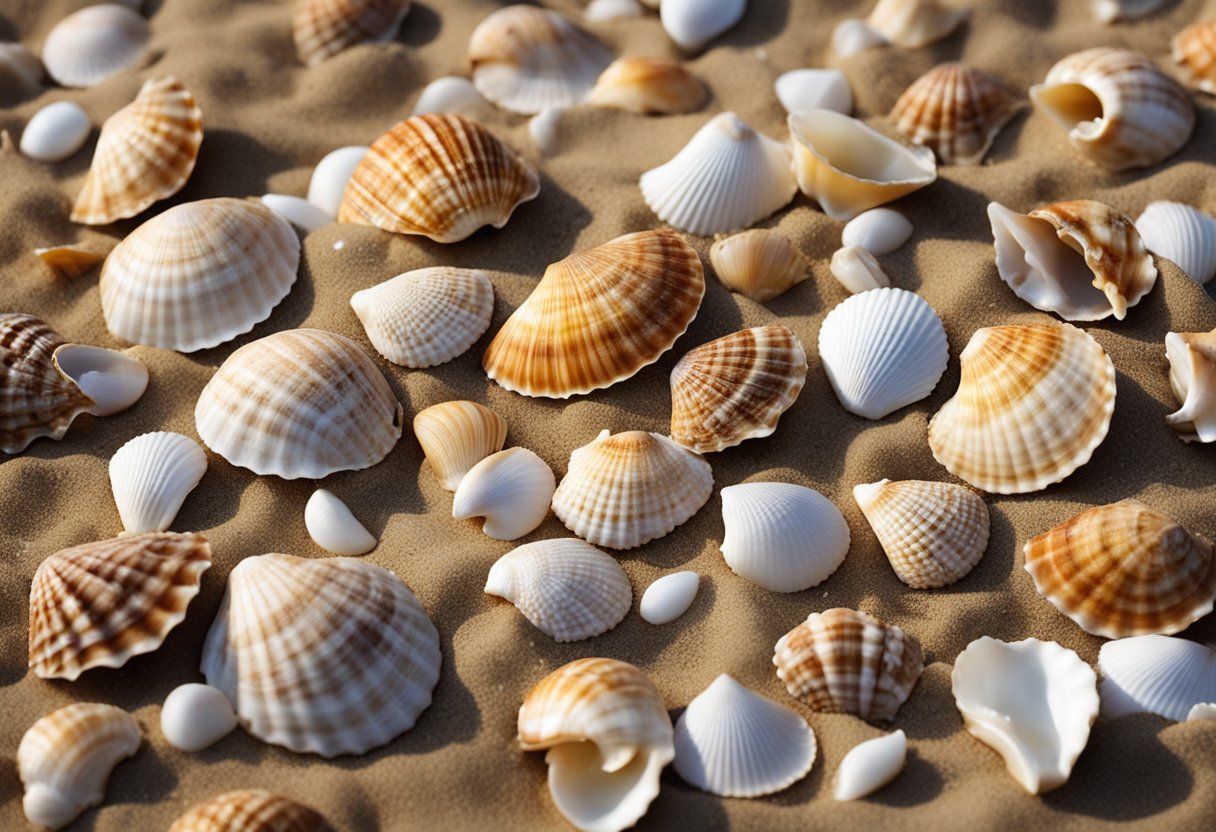Seashells are more than just beach treasures; they are windows into the diverse and fascinating world beneath the ocean's waves. From the iconic conch shells to the delicate sand dollars, these natural wonders come in a variety of shapes, sizes, and colors, each with their own unique characteristics. Some are smooth and polished, while others are rough and spiky, showcasing a spectrum of beauty that reflects their habitats and the marine life that once inhabited them.
 Flat shells are often found in sandy coastal regions, making them common discoveries for beachcombers. These shells can be easily spotted and collected, each one adding its own story to a collector’s trove. In contrast, cone-shaped shells are usually inhabitants of tropical reefs and sandy bottoms, often more vibrant and intricate in design.
Seashell collecting is not just a hobby; it's a journey of discovery that connects people to the mysteries of the ocean. With each find, collectors gain a deeper appreciation for marine biodiversity. Whether you're a seasoned collector or a curious beginner, exploring the diversity of seashells offers endless opportunities for learning and enjoyment.
Flat shells are often found in sandy coastal regions, making them common discoveries for beachcombers. These shells can be easily spotted and collected, each one adding its own story to a collector’s trove. In contrast, cone-shaped shells are usually inhabitants of tropical reefs and sandy bottoms, often more vibrant and intricate in design.
Seashell collecting is not just a hobby; it's a journey of discovery that connects people to the mysteries of the ocean. With each find, collectors gain a deeper appreciation for marine biodiversity. Whether you're a seasoned collector or a curious beginner, exploring the diversity of seashells offers endless opportunities for learning and enjoyment.
 Seashells serve multiple biological roles for the animals that produce them. These roles include protection from predators, aiding in movement, and controlling growth and development.
Seashells serve multiple biological roles for the animals that produce them. These roles include protection from predators, aiding in movement, and controlling growth and development.
 Seashells exhibit a remarkable variety of patterns and colors that can take on many forms due to pigmentation, texture differences, and environmental factors.
Seashells exhibit a remarkable variety of patterns and colors that can take on many forms due to pigmentation, texture differences, and environmental factors.
 Seashells have been integral to human culture and traditions for centuries. They hold value in art, economics, spirituality, and scientific research.
Seashells have been integral to human culture and traditions for centuries. They hold value in art, economics, spirituality, and scientific research.
 Seashells face several threats such as the endangerment of species, pollution, habitat loss, and efforts made towards their conservation.
Seashells face several threats such as the endangerment of species, pollution, habitat loss, and efforts made towards their conservation.
 Flat shells are often found in sandy coastal regions, making them common discoveries for beachcombers. These shells can be easily spotted and collected, each one adding its own story to a collector’s trove. In contrast, cone-shaped shells are usually inhabitants of tropical reefs and sandy bottoms, often more vibrant and intricate in design.
Seashell collecting is not just a hobby; it's a journey of discovery that connects people to the mysteries of the ocean. With each find, collectors gain a deeper appreciation for marine biodiversity. Whether you're a seasoned collector or a curious beginner, exploring the diversity of seashells offers endless opportunities for learning and enjoyment.
Flat shells are often found in sandy coastal regions, making them common discoveries for beachcombers. These shells can be easily spotted and collected, each one adding its own story to a collector’s trove. In contrast, cone-shaped shells are usually inhabitants of tropical reefs and sandy bottoms, often more vibrant and intricate in design.
Seashell collecting is not just a hobby; it's a journey of discovery that connects people to the mysteries of the ocean. With each find, collectors gain a deeper appreciation for marine biodiversity. Whether you're a seasoned collector or a curious beginner, exploring the diversity of seashells offers endless opportunities for learning and enjoyment.
Classification of Seashells
Seashells vary widely and can be categorized by the type of mollusk, their habitat, and their shape and size. Understanding these classifications helps in studying their diversity and evolutionary relationships.By Mollusk Type
Seashells are primarily classified based on the type of mollusk that produces them. Bivalves include clams, oysters, and mussels. They have two hinged shells. Gastropods, like snails, have a single, often spiraled shell. Cephalopods, such as squids, produce shells that are usually internal, except for nautiluses, which have external spiral shells. Chitons have eight plated shells, which makes them distinct from the others. These types show various structural adaptations that aid in understanding their evolutionary paths.By Habitat
Seashells can also be classified by where the mollusks live. Marine seashells are found in the ocean and include those from coral reefs, sandy shores, and deep-sea environments. Freshwater seashells come from rivers, lakes, and streams. Some mollusks are terrestrial and can be found in moist land environments. Each habitat influences the shell's characteristics, such as thickness, color, and structure, due to the different environmental pressures they face.By Shape and Size
The physical appearance of seashells offers another method of classification. Some are spiraled, like many gastropods. Others are flat or rounded, like bivalves. The size also varies greatly; shells can be as small as a few millimeters or as large as several centimeters. This classification helps identify species and understand their adaptation strategies. The shape can offer clues about the mollusk's lifestyle, such as burrowing, swimming, or attaching to surfaces. Their size often indicates their age and the environment they lived in.Biological Functions
 Seashells serve multiple biological roles for the animals that produce them. These roles include protection from predators, aiding in movement, and controlling growth and development.
Seashells serve multiple biological roles for the animals that produce them. These roles include protection from predators, aiding in movement, and controlling growth and development.
Protection Mechanisms
Seashells act as a defensive shield for the animals that create them. The hard, external shell protects from predators, environmental hazards, and parasites. For instance, the thick shells of some mollusks can resist strong currents and attack from other marine creatures. These shells are typically composed of calcium carbonate, making them sturdy and durable. This tough structure provides an effective barrier against physical damage and predation.Locomotion and Structure
Seashells also assist in locomotion and provide structural support. The shape of the seashell can influence how an animal moves. For example, snails have coiled shells that help balance their bodies, enabling smooth movement across surfaces. Bivalves, like clams and oysters, use their shells for burrowing and anchoring themselves to substrates. These shells have a hinge and are held together by strong muscles, which allows for opening and closing movements essential for feeding and mobility.Growth and Formation
Growth and formation of seashells are tightly controlled processes. Shells grow incrementally with the addition of new layers of material. The inner part of the shell, called the mantle, secretes calcium carbonate and organic compounds, which harden to form the shell. The process is influenced by genetic factors and environmental conditions such as water temperature, salinity, and availability of minerals. The shell’s growth structure can vary widely between species, resulting in the diverse shapes and sizes observed in nature. This combination of protection, support, and regulated growth illustrates the complexity and necessity of seashells for the survival of various marine organisms.Patterns and Colors
 Seashells exhibit a remarkable variety of patterns and colors that can take on many forms due to pigmentation, texture differences, and environmental factors.
Seashells exhibit a remarkable variety of patterns and colors that can take on many forms due to pigmentation, texture differences, and environmental factors.
Pigmentation
Different types of colored pigments determine the variety of hues seen in seashells. Common colors include white, brown, yellow, red, blue, and green. Pigments are distributed in bands, spots, or other patterns, affecting the shell's overall appearance. Some shells have uniform colors, while others display intricate patterns. The Cowrie shell, for example, has smooth, glossy surfaces with various patterns like spots or stripes. These patterns can create camouflage or serve as a warning to predators. Colors often result from organic pigments produced by the mollusk as it secretes its shell.Surface Texture
A seashell's surface texture ranges from smooth and shiny to ribbed and rough. Differences in texture impact how a shell looks and feels. Rough textures like those seen in some Conch shells often have ridges and spines. These features evolve to provide protection or aid in movement. On the other hand, shells like those of scallops are typically smoother but may have subtle ridges or grooves. These textural elements are formed as the shell grows, influenced by the mollusk's behavior and habitat. Texture can sometimes affect the shell's color, with rougher surfaces often appearing duller.Environmental Influence
The surrounding environment greatly influences the colors and patterns of seashells. Light exposure, water temperature, and available nutrients all play a role. In clear, sunlit waters, bright colors can develop, aiding in camouflage or mating displays. Pollution and habitat changes can also impact shell appearance. For instance, acidic waters may erode shells, leading to color fading or pattern loss. Seasonal changes can affect pigmentation intensity, with some shells becoming brighter or duller depending on the time of year. Environmental variables make each shell unique.Seashells in Ecology
Seashells play vital roles in ecosystems. They contribute to food webs, help form and maintain habitats, and serve as indicators of environmental health.Food Web Contributions
Seashells are crucial in marine food webs. Small fish and crabs often feed on the organisms that inhabit or create seashells. These include mollusks like snails and clams. Predators, such as birds and larger fish, then consume these smaller animals. By being a part of these intricate food chains, seashells help sustain various marine populations. Some sea creatures, like hermit crabs, rely directly on empty seashells for protection and housing. This relationship shows how seashells support survival and provide resources for different marine species.Habitat Formation
Seashells contribute significantly to habitat formation. When mollusks die, their shells often settle on the sea floor. Over time, these shells accumulate and create complex structures, like shell beds. These structures offer shelter and breeding grounds for diverse marine organisms. Coral reefs, for example, benefit from seashells as they add to the reef's structure. Shells can also act as substrates for algae and small plants, further enhancing the habitat. This makes seashells essential for maintaining marine biodiversity and ecosystem stability.Bioindicators of Health
Seashells serve as bioindicators. Changes in their growth, composition, or abundance can reflect alterations in water quality and environmental conditions. Scientists study seashells to detect the presence of pollutants, such as heavy metals or toxins, which can be absorbed by the shells. The health of mollusk populations provides insights into broader marine health. Declines in seashell diversity or population can signal issues like ocean acidification or habitat destruction. Monitoring seashells helps in understanding and managing marine environments effectively. Seashells thus provide essential ecological functions, from supporting food webs and forming habitats to indicating environmental health changes. Their role in marine ecosystems underscores the importance of preserving these natural resources.Human and Cultural Significance
 Seashells have been integral to human culture and traditions for centuries. They hold value in art, economics, spirituality, and scientific research.
Seashells have been integral to human culture and traditions for centuries. They hold value in art, economics, spirituality, and scientific research.
Art and Ornamentation
People have used seashells in art and decoration for thousands of years. Ancient civilizations, like the Egyptians and Greeks, created jewelry, mosaics, and sculptures with them. They continue to be popular in modern crafts and home décor. Seashells' unique textures and colors make them ideal for making beautiful and intricate designs. Seashell jewelry and ornaments often serve as souvenirs or keepsakes from beach vacations, preserving memories in a tangible form.Economic Importance
Seashells also play a significant role in various economies. They are harvested to create goods like buttons, bracelets, and carved decorations. Certain shells, like cowries, were once used as currency in different cultures, highlighting their historical economic value. In some modern markets, seashell collections can become a profitable business. People sell rare and exotic shells to collectors. Additionally, products like a Seashell Display Case help display and organize these valuable shells, enhancing their market appeal.Symbolism and Spirituality
Seashells are rich in symbolism and feature prominently in many spiritual traditions. In Christianity, seashells represent baptism, symbolizing purity and renewal. The conch shell holds significance in Buddhism, symbolizing the teachings of Buddha. Many cultures link seashells with fertility and femininity due to their shape and connection to water, which represents life and birth. They are seen as symbols of protection, journeying, and good fortune in various myths and tales.Scientific Research
Seashells are an important subject in scientific research. Studying their structure and composition helps scientists understand environmental changes. Seashells provide clues about the ocean's history and conditions, as their growth patterns and chemical composition reflect water temperature and chemistry. In addition, research on shells has led to developments in materials science and even medical fields, as their unique properties inspire innovations in bioengineering and design.Conservation and Challenges
 Seashells face several threats such as the endangerment of species, pollution, habitat loss, and efforts made towards their conservation.
Seashells face several threats such as the endangerment of species, pollution, habitat loss, and efforts made towards their conservation.

